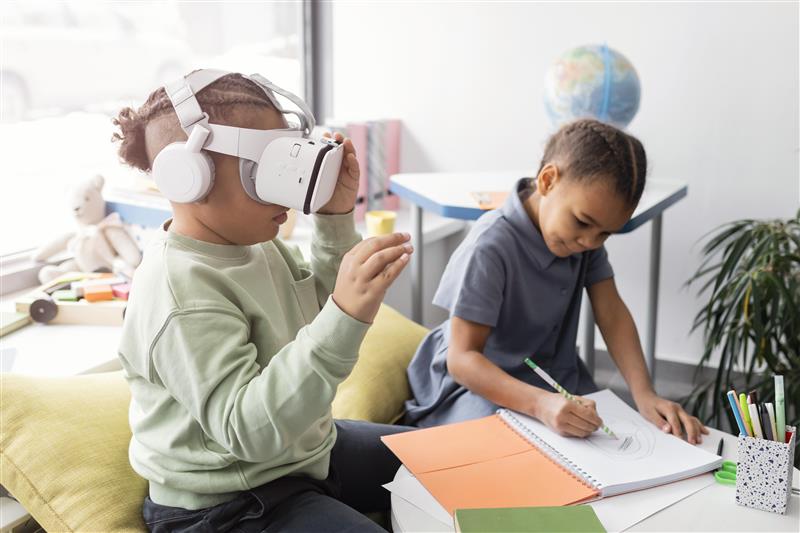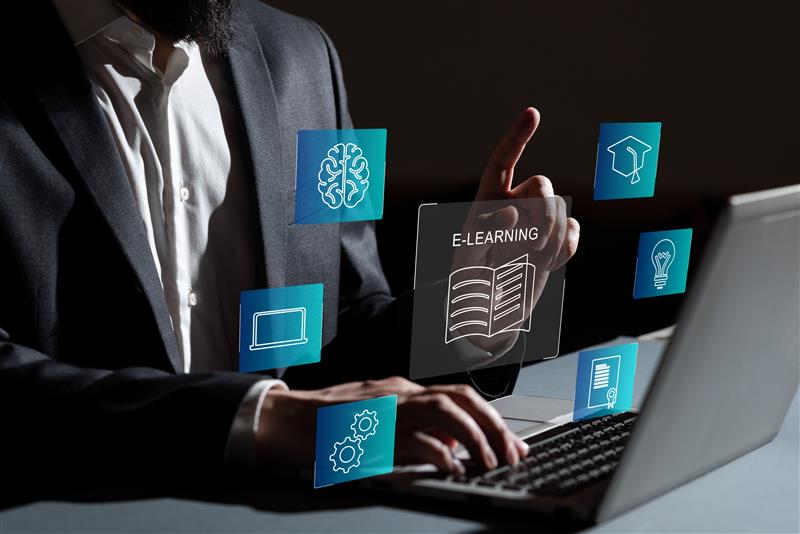The landscape of American education is shifting again. In the next year, schools and universities will face new expectations shaped by changing technology, workforce demands, and evolving ideas about how students learn best.
Many of these trends are not new. They have been building over the past decade. However, by 2026, they will no longer be optional experiments. They will define how teaching and learning happen in classrooms across the country.
If educators want to be ready, they need to understand what is coming and why it matters.
Personalized learning will become a priority
Personalized learning is moving from theory to standard practice. Schools today are moving toward teaching methods that focus on each student’s pace, interests, and goals.
Teachers rely on digital tools to track how students are doing and make quick changes to their lessons when needed. When this approach works well, it helps close learning gaps and keeps students more involved in class.
Still, many educators report limited training in how to manage personalized instruction at scale. Professional development and curriculum alignment will determine how well this shift succeeds.
Hybrid learning will become a permanent structure
Hybrid education is no longer a temporary solution. Districts across the country have formalized blended models that combine online and in-person instruction.
Digital learning tools are opening new doors for students who once had limited access to education.
Rural learners, working adults, and students with disabilities are now able to study at their own pace and connect with opportunities that were once out of reach
The challenge lies in consistency. Many schools still struggle to balance digital and face-to-face components without creating inequities in learning quality. Building teacher capacity to deliver strong hybrid lessons will remain a key focus for administrators.
Technology will redefine instructional design
Virtual and augmented reality, artificial intelligence tools, and data dashboards are already reshaping how subjects are taught.
Students can now explore the human body in 3D or simulate historical events. These immersive methods make abstract topics more concrete.
However, effective implementation requires more than access to hardware. Teachers today need to know how to use technology in a way that truly supports learning. The key is to connect digital tools with clear goals, not just add them for the sake of using tech. When that connection is missing, even the best tools can end up distracting students instead of helping them learn.
Core skills will take priority over content memorization
Employers and policymakers agree that students need stronger foundational skills. In 2026, education systems are expected to give greater weight to critical thinking, communication, and collaboration.
This trend moves schools away from rote learning. More focus will be on helping students apply knowledge to real-world situations.
For educators, this shift means more project-based and inquiry-driven instruction. Teachers will assess how well students reason through problems, not just recall information.
Several states are already updating their academic standards to reflect these expectations.
Assessment systems will evolve
Standardized testing will not disappear, but its role will continue to change. Schools are exploring continuous and competency-based assessments that measure growth throughout the year rather than a single exam score.
Digital portfolios and micro-credentials are gaining attention as tools to capture skill development.
The success of these systems depends on teacher readiness. Continuous assessment requires ongoing observation, data interpretation, and timely feedback. Training in these areas will be essential.
The teaching profession will continue to transform
By 2026, the role of the teacher will look very different from what it did a decade ago. Automation has reduced administrative burdens such as grading and attendance tracking. This gives educators more time to mentor students and design meaningful learning experiences.
Teachers are expected to act more as facilitators than lecturers. Their role now involves coaching students to think critically, manage projects, and evaluate sources.
Professional development will need to reflect this broader definition of teaching. States that invest in ongoing training, mentorship, and leadership opportunities for educators are likely to see stronger outcomes.
Data privacy will take center stage
As digital learning expands, student data privacy has become one of the most pressing concerns in education. Schools are collecting more information than ever before—from attendance patterns to learning analytics.
By 2026, stronger data protection policies are expected to be in place at both district and federal levels.
Teachers will need to understand how to safeguard student information, use approved platforms, and model responsible digital citizenship. This will be part of every educator’s professional duty, not just an administrative requirement.
Inclusion will continue to guide reform efforts
Equity remains a central goal of American education. In 2026, schools are expected to take further steps to close opportunity gaps for students from different cultural, linguistic, and socioeconomic backgrounds.
Curricula will include more diverse voices, and learning environments will be designed for accessibility. Tools like assistive technology, flexible lesson plans, and teaching methods that reflect students’ diverse backgrounds are helping every learner feel included.
Across many states, schools are also teaming up with community groups to support students outside the classroom. After-school activities, mentorship programs, and career-focused initiatives are giving young people more ways to learn and grow beyond school hours.
Lifelong learning will reshape higher education
The idea that education ends with graduation is fading quickly. In 2026, more adults are returning to classrooms, either in person or online, to gain new credentials or career skills.
Universities and community colleges are redesigning programs to serve working professionals. Short-term certificates, online modules, and flexible degree pathways are becoming standard.
For educators, this means adapting to a more diverse student population with different goals and schedules. Lifelong learning is no longer just a talking point; it is becoming the defining feature of American education.
Policy and leadership will play a defining role
State education departments and school districts will continue to drive much of this change. Many states are already expanding teacher training programs to include more curriculum-aligned professional development.
Research consistently shows that access to high-quality instructional materials and training on how to use them improves student outcomes.
However, many colleges and universities that prepare teachers have been slow to adjust. If teacher preparation programs do not align with modern instructional practices, schools will face persistent gaps between what teachers are taught and what classrooms require.
Preparing for 2026
For educators, preparation begins with awareness. Understanding the direction of reform allows teachers to make small, practical adjustments now.
Schools can focus on a few key areas to keep improving. They can offer teachers more hands-on training in personalized and blended learning, make sure lesson materials match state standards, and build closer ties with teacher preparation programs.
It also helps to expand mentoring for new educators and create stronger rules around data privacy and responsible use of technology.
Each of these steps will help schools adapt to a changing educational landscape while maintaining quality and equity.
The outlook
The future of education in the U.S. will rely on how well teachers, school leaders, and policymakers work as a team. We already have the tools and new teaching models we need, but real progress will come from using them wisely—not just adopting them quickly.









